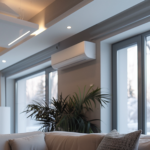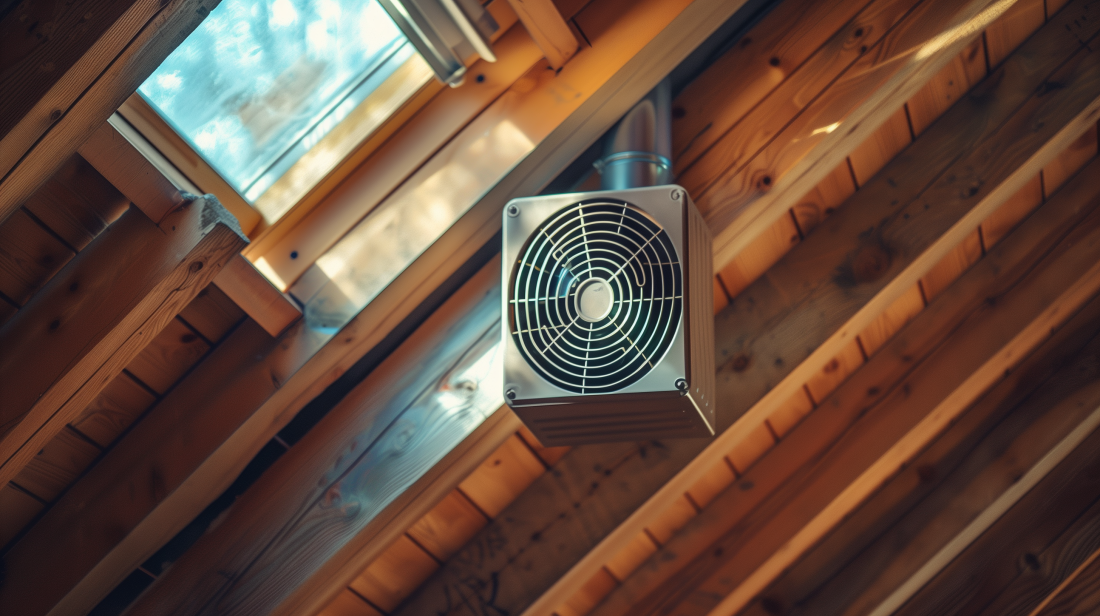Attic ventilation fans play a crucial role in maintaining the overall health of your home. They help regulate temperature, reduce moisture build-up, and can extend the lifespan of your roofing materials. This blog will delve into the importance of attic ventilation fans, their benefits, installation guidelines, and compliance with building codes.
Importance of Attic Ventilation Fans
Proper attic ventilation is essential for several reasons:
- Temperature Regulation: Attic fans help in maintaining a balanced temperature in your attic space. During summer, they expel hot air, reducing the burden on your cooling systems.
- Moisture Control: These fans also reduce moisture build-up, which can lead to mold growth and wood rot.
- Roof Longevity: By reducing heat and moisture, attic fans can extend the lifespan of your roofing materials, preventing premature deterioration.
Benefits of Attic Ventilation Fans
- Energy Efficiency: By reducing the attic temperature, ventilation fans lower the demand on air conditioning systems, leading to energy savings.
- Comfort: A cooler attic translates to cooler living spaces below, enhancing overall home comfort.
- Preventing Damage: Proper ventilation prevents the accumulation of moisture, which can cause structural damage and mold growth.
Types of Attic Ventilation Fans
- Electric Fans: Powered by electricity, these fans are highly effective and can be controlled via thermostats or humidistats.
- Solar Fans: These are eco-friendly options that use solar power to operate, reducing energy costs.
- Wind-Powered Turbines: Utilize wind to ventilate the attic and are suitable for areas with consistent wind flow.
Installation Guidelines
Placement
- Location: Attic fans should be installed near the peak of the roof to expel hot air effectively.
- Intake Vents: Ensure that your attic has adequate intake vents (soffit or gable vents) to allow cool air to enter as hot air is expelled.
Compliance with Building Codes
The installation of attic ventilation fans must adhere to the International Residential Code (IRC) guidelines to ensure safety and efficiency. Key provisions include:
- Ventilation Requirements: According to IRC Chapter 7, proper ventilation is necessary to protect against moisture damage and ensure adequate air exchange.
- Wind Resistance: For homes in high-wind areas, the IRC specifies that attic fans must be installed to withstand local wind pressures. This involves securing fans with appropriate fasteners and ensuring they meet wind design criteria.
- Energy Efficiency: Compliance with the International Energy Conservation Code (IECC) is also important, particularly for electric and solar-powered fans. The fans should be installed to enhance energy efficiency and comply with local energy codes.
Maintenance and Inspection
Regular maintenance of attic ventilation fans is crucial for their longevity and efficiency. This includes:
- Cleaning: Remove dust and debris from fan blades and vents to ensure unobstructed airflow.
- Inspection: Regularly inspect for any signs of wear or damage, and ensure that the electrical connections are secure for electric fans.
Conclusion
Attic ventilation fans are a valuable addition to any home, offering benefits in terms of energy efficiency, comfort, and roof longevity. Ensuring their proper installation and compliance with building codes is critical for maximizing their effectiveness. For professional installation and maintenance, or for any immediate service needs, contact Allied Emergency Services, INC.
For immediate service or consultation, you may contact us at Allied Emergency Services, INC.
Contact Information:
Phone: 1-800-792-0212
Email: Info@AlliedEmergencyServices.com
Location: Serving Illinois, Wisconsin, and Indiana with a focus on the greater Chicago area.
If you require immediate assistance or have specific questions, our human support is readily available to help you.
Disclaimer: This article is intended for informational purposes only. For professional advice, consult experts in the field.










